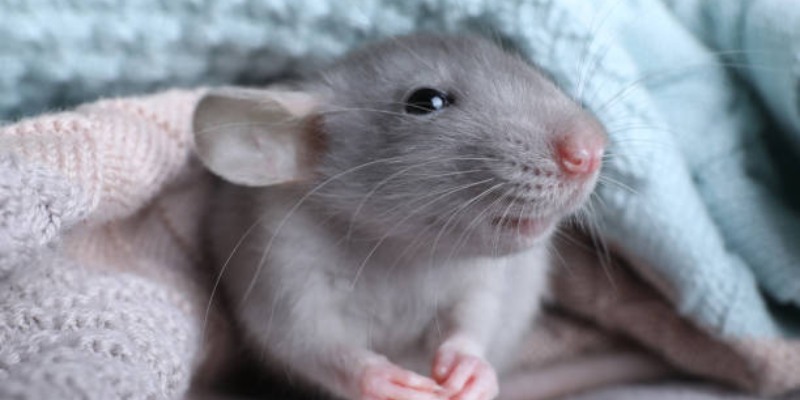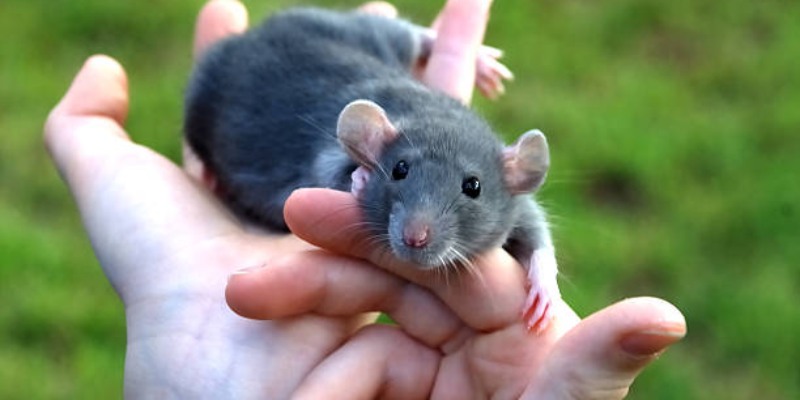Rats have a bad reputation, but those who have welcomed these whiskered miracles into their homes know the reality: rats are intelligent, curious, and hungry learners. If you have ever wondered if having a pet rat that can be trained is possible, the answer is yes.
With patience, persistence, and the correct approach, rats can learn tricks, obey commands, and even solve puzzles. This guide painstakingly outlines all you need to know to unlock your rat's potential—without making the process complex, tedious, and frustrating.
Why Rats Make Unexpected Training Stars
Rats are tiny, yet their brains are exceptionally competent. They live for mental stimulation and companionship, so they are perfect candidates for training. In contrast to sure pets that work solely by habituation, rats learn to connect actions and outcomes quickly. Their problem-solving skills are comparable to those of dogs and cats, and their agile paws allow them to execute tricks such as fetching, spinning, or even running obstacle courses.

And their desire to form close bonds with humans means they'll love training sessions as much as you do.
To set the stage for success, start by establishing a calm atmosphere. Choose a quiet area free from distractions like noise or other animals. Keep your sessions short—5 to 10 minutes—to fit within their attention span. Use positive reinforcement consistently, such as treats or compliments, to build desired behaviour. Avoid punishment, as it can cause confusion or Stress in your rat.
Step 1: Building Trust Before Tricks
Before you plunge into commands, build trust first. Pet your rat gently every day to get them used to your touch. Place treats in your hand, such as little bits of fruit or vegetables, to create positive associations. In time, they will know you as a source of security and reward.
When your rat seems comfortable, add a clicker or the same sound, like a tongue click, to mark desired behaviours. This, called clicker training, helps them understand exactly what action has resulted in the reward. For example, click when they touch your finger with their nose, then immediately offer a treat. Repeat until they start to react consistently.
Step 2: Learning Basic Commands
Begin with easy confidence builders. An easy starting point is getting your rat to come when called. Call their name, then offer a treat. In time, they will learn to equate their name with good things. Next, attempt target training: hold a treat by your finger and say "touch." As they sniff or nudge your finger, click and treat.
This skill teaches them to track their hand, a talent that can be developed into more complex tricks.
The "up" command is another friendly option for newcomers. Place a treat over your rat's head and say "up," they will naturally reach for it, standing on their hind legs. Click and treat every effort they make. Slowly, phase out the treat, using only your hand movement and verbal cue.

Step 3: Levelling Up To Advanced Tricks
Once your rat masters the basics, challenge them with more difficult tasks. Fetch is a crowd-pleaser. Throw a light object, such as a small ball, and reward them for chasing it. When they grab it, click and treat. When they drop it before you, congratulate them with extra praise. Gradually introduce the command "fetch" before throwing the object.
For a show-stopping trick, teach your rat to spin in a circle. Hold a treat before their nose and move it slowly in a circle. Say "spin" as they follow the treat. Click and reward when they complete the circle. Practice until they spin on command without the treat.
Step 4: Problem-Solving And Socialisation
Rats aren't only trainable—they're social butterflies. To help them gain confidence, expose them to new individuals, noises, and locations. Allow trusted friends to give treats or take your rat on supervised outside adventures in a safe carrier. The more they experience, the more flexible they'll be.
You can also make your puzzles to keep their brains challenged. Place treats in cardboard tubes or beneath cups and ask them to "search" or "find." For a playful variation, teach them to high-five by placing a treat over their paw. When they raise it, click and treat. Combine the action with the word "high-five" to solidify the behaviour.
Troubleshooting Common Issues
Not every session will be perfect, and that's okay. If your rat appears bored, attempt to shorten the session or use more rewarding treats. If fear becomes a problem, return to the fundamentals and focus on trust-building. Consistency is everything—train at the same time daily and always finish positively.
Don't try to teach them too many tricks at once. Focus on one skill until it's mastered before moving on to the next. If you notice that progress has halted, break the task into smaller components. So, if you're teaching "jump," start by rewarding little hops before insisting on leaps.

The Secret Sauce: Incorporating Fun Into Training
The most effective method for stimulating rats is to make training resemble play. Vary tricks to avoid monotony, and reward small successes. Keep in mind, rats do have distinct personalities—some may favour agility tunnels, others adore puzzle toys. Allow their interests to direct your efforts. Incorporate training organically into your day-to-day activities. Utilise meal times to practice commands, or scatter treats throughout the cage for a scavenger hunt. The more you blend learning and life, the quicker they will learn new things.
More Than Tricks: Strengthening Your Bond
Training is not merely about making rats perform—it's about building a stronger bond. Rats live for interaction, and frequent training reinforces trust. Please pay attention to their body language: a relaxed attitude, inquisitive sniffing, or friendly nips are signs that they are enjoying themselves and thoroughly engaging.
Provide enrichment toys like tunnels, hammocks, or chew blocks when not training. An enriching environment sharpens their minds and supports the behaviours you train them on.
Celebrating Your Rat’s Success
Every rat learns at their own pace, but with time, you'll be amazed at what they can achieve. Whether spinning on command, fetching a tiny ball, or solving puzzles, take pride in their progress. Share their milestones with friends (or on social media—rats are naturals at going viral!).
Remember, the goal isn’t perfection. It’s about fostering a happy, mentally active pet who loves spending time with you. So grab some treats, embrace the journey, and prepare to be dazzled by your rat’s brilliance.








